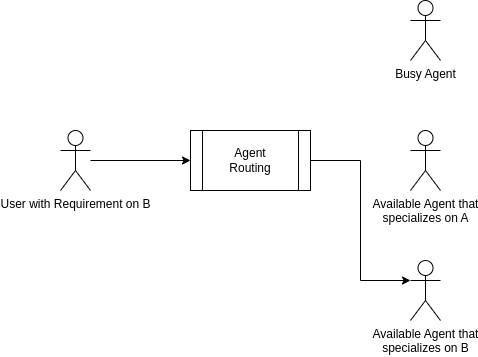At some point in time, most of us have needed some level of support from a customer service agent.*1 It’s a vital feature of almost all businesses, no matter the industry.
What does this often mean? On a traditional call to a customer service phone number, a confusing array of “Press this number for x” choices (and none of them right) and endless waiting times. All just to find out after a lengthy explanation of your problem, that the agent you get doesn’t have the right expertise and needs to transfer you to someone else. Things are marginally better, perhaps, when chatting with customer services on a website, but still nowhere near ideal.
Can this all be avoided? Yes! With WebRTC you can build great systems to enable your customer to start this interaction right within your web or native application. Paired with a good routing strategy, your customers get the right agent the first time, without lengthy waits.
In this post, we will talk about what agent routing is and how it makes the process of connecting users in a WebRTC connection more efficient. In a follow-up post, we show you how to implement an agent routing strategy into a web application.
Understanding Agent Routing
Agent routing is about pairing users with the right customer support agent, one that is able to provide the assistance they need to solve their problem. But what does “the right support agent” mean in this context?
The “right support agent” is:
- Available
- Understands the context of the problem
- Has the knowledge to solve the problem
There must be a mechanism in place based on parameters such as agent availability and skills, product classification, customer information, and call history. These parameters are used to match and route a request to the “right” pool of support agents.
Benefits of Agent Routing
Adopting an agent routing strategy for your application has the following benefits:
Increased Productivity and Efficient Resource Allocation
Agent routing ensures that incoming requests are directed to the most suitable agents based on factors such as expertise, availability and workload. This optimizes resource allocation and ensures that the right agents handle the right tasks, improving overall efficiency and productivity.
Improved Customer Experience
By connecting customers or users with agents who are best equipped to meet their needs, agent routing enhances the customer experience. Users receive more relevant assistance resulting in higher satisfaction levels and improved brand reputation.
Personalization
Agent routing can consider user preferences and previous interactions when assigning agents, providing a more personalized experience. This personal touch strengthens customer loyalty and engagement.
On top of this, with WebRTC you build a communication platform that takes these benefits and bundles them right within your web or mobile application.
Agent Routing Use Cases
Agent routing techniques are suitable for support teams and customer service representatives that respond to inbound calls, in multiple industries and use cases including:
Contact Centers of all Types
The most obvious application for agent routing with WebRTC are contact centers for any industry from appliance manufacturers to airlines. The idea here is to have a system that keeps track of the agents that are available and their skills, along with the clients’ past “cases” that they called in on before. When a client calls, such a system can verify if it is a new issue or a past one and route to an available agent who is already familiar with the client or case.
Telehealth
In telehealth, agent routing is a great solution for emergency medical calls and instant appointment features. Agent routing can be used in conjunction with electronic records to route patients to a medical practitioner/department that is following a specific case or specializes in certain diseases.
Teacher/Tutor/Specialist Match
Agent routing provides the means for pairing students with the right teacher, and similar cases where there needs to be a match between caller and receiver. Agent routing can take advantage of the information that both teacher and students provide to make sure that the right teacher is assigned to a student.
Think of an application where students contact an on-call teacher to help with their homework. The student is a native Spanish speaker who is learning English, but his current level doesn’t allow them to maintain a conversation just yet and so he needs to be paired with a Spanish speaker.
Online Legal Assistance
Imagine you are on a law firm website because you need online legal assistance, but you are unsure about who to seek. You go to an application, fill a form with basic information about your problem and click on the “Call a Lawyer” button that will pair you with a lawyer with just the knowledge you need. This is a perfect fit for agent routing!
Next Up: Adding Agent Routing to Your Application
Agent routing provides an efficient workflow for your users by giving them access to appropriate professionals for their needs. By pairing up with WebRTC capabilities, you can add this power right within your web or mobile application. In the next post, our talented WebRTC Developer Tahir shows you how you can do this!
Ready to get started with agent routing and real-time communication? Contact WebRTC.ventures today and let’s make it live!
- Today, we’re talking about human agents. AI-powered bots are getting better and better! When used in conjunctions with human agents, they’re even more powerful. We can build this into your application, too! ↩︎














